Have you ever felt like there’s a part of yourself that you’re not fully in touch with? Maybe you’ve noticed certain thoughts, feelings, or behaviors that seem to be completely out of touch with your usual self.
It’s like there’s this hidden side of you lurking in the shadows, waiting to be discovered.
Well, you’re not alone. Many of us have experienced that nagging sense that there’s more to who we are than meets the eye. And that’s where the concept of the shadow self comes in. Let’s explore together!
What is a Shadow Self?

You’ve got your regular old self, the one you show to the world—the happy, shiny version. But lurking beneath the surface, there’s another side to you, the shadow self.
Now, the shadow self isn’t some evil twin or anything like that. It’s more like the flip side of the coin—the parts of yourself that you might not want to admit exist. We’re talking about those pesky thoughts, feelings, and impulses that you’d rather keep hidden away in the dark.
But here’s the thing: your shadow self isn’t all bad. Sure, it might contain some stuff you’re not too proud of, but it’s also where your creativity, your passion, and your deepest desires reside. It’s like a treasure trove of hidden potential just waiting to be discovered.
Engaging with your shadow self means taking a good, hard look at all those hidden bits and pieces without judgment. It’s about accepting yourself in all your messy, complicated glory and embracing the full spectrum of who you are.
Is your Shadow Self Evil?
Ah, the age-old question. Is your shadow self inherently evil? The short answer: nope. Your shadow self isn’t some dark, sinister force lurking in the shadows.
It’s simply the unacknowledged parts of yourself—the good, the bad, and everything in between. Embracing your shadow self means accepting all aspects of who you are, without judgment.
How does a Shadow Self Form?
Well, it’s a combination of factors, really. Your shadow self is formed from all those parts of yourself that you’ve repressed, denied, or deemed unacceptable.
These could be childhood experiences, societal norms, or even just aspects of yourself that you’re not comfortable with. Over time, these hidden parts of yourself form into what we call the shadow self.
If you are interested in more information on the Shadow Self and how Carl Jung formed this concept then check out this helpful video.
What are the Shadow Self Types?
All right, let’s explore the different types of the shadow self:
1. The Procrastinator

Do you find yourself putting things off until the last minute? That’s your procrastinator shadow self at work. This type tends to avoid responsibility and delay taking action, often out of fear of failure or perfectionism.
Stemming from past experiences of failure or criticism, procrastination offers temporary relief from the fear of repeating those experiences.
2. The People-Pleaser
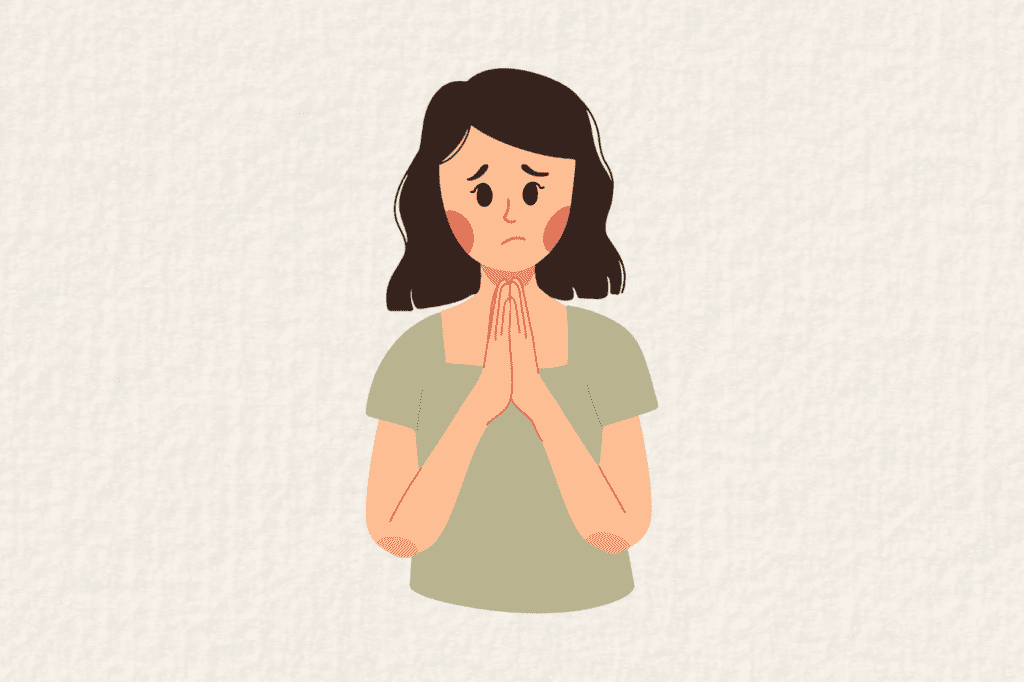
Are you bending over backward to please others, even at the expense of your own well-being? Meet the people-pleaser shadow self. This type thrives on approval and validation from others, often sacrificing authenticity in the process.
Driven by childhood experiences of rejection or abandonment, the people-pleaser seeks validation and approval to avoid feeling unloved or unwanted.
3. The Perfectionist

Do you have impossibly high standards for yourself and others? Sounds like your perfectionist shadow self is calling the shots. This type is obsessed with getting everything just right, often at the expense of enjoying the journey or accepting imperfection.
Rooted in early experiences of conditional love or excessive pressure to succeed, the perfectionist strives for flawlessness to gain acceptance and avoid criticism.
4. The Inner Critic
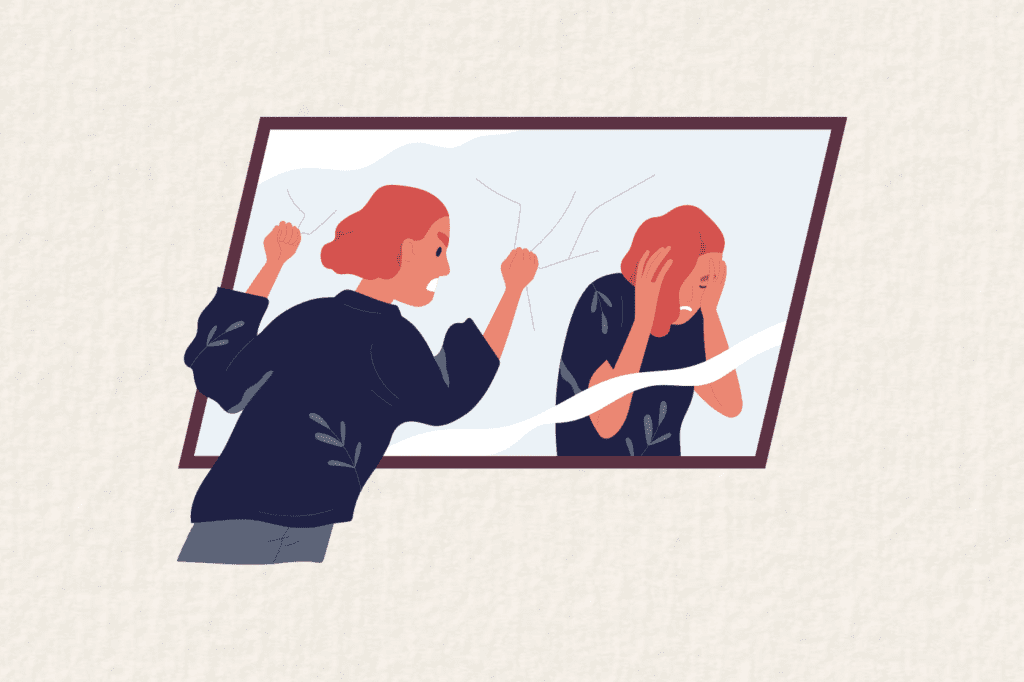
Ever catch yourself engaging in negative self-talk or beating yourself up over small mistakes? That’s the inner critic shadow self rearing its ugly head. This type is relentless in its pursuit of self-criticism, constantly reminding you of your flaws and shortcomings.
Formed through internalized messages of unworthiness from caregivers or authority figures, the inner critic perpetuates self-doubt and undermines self-esteem.
5. The Saboteur

Do you find yourself self-sabotaging or getting in your own way when things are going well? That’s the saboteur’s shadow self in action. This type thrives on creating chaos and sabotaging your efforts to achieve success or happiness.
Arising from past traumas of betrayal or disappointment, the saboteur sabotages efforts to protect against potential pain or rejection.
6. The Victim
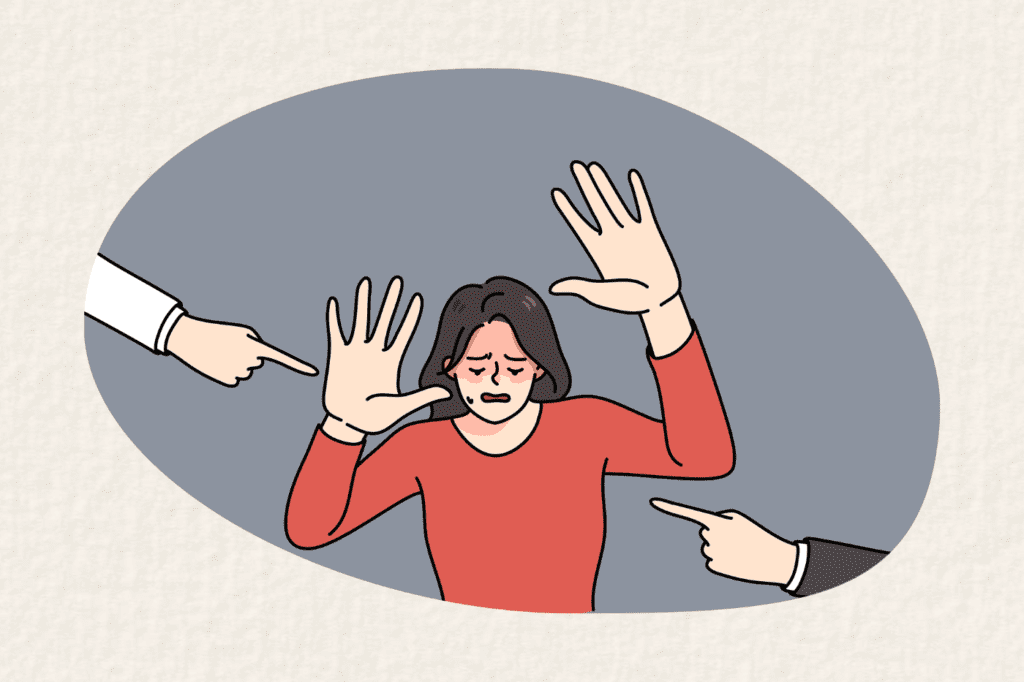
Feeling like life is constantly working against you and nothing ever goes your way? Meet the victim’s shadow self. This type tends to blame external circumstances for its own unhappiness and feels powerless to change its situation.
Resulting from experiences of abuse, neglect, or powerlessness, the victim mentality perpetuates feelings of helplessness and externalizes responsibility for one’s circumstances.
7. The Controller
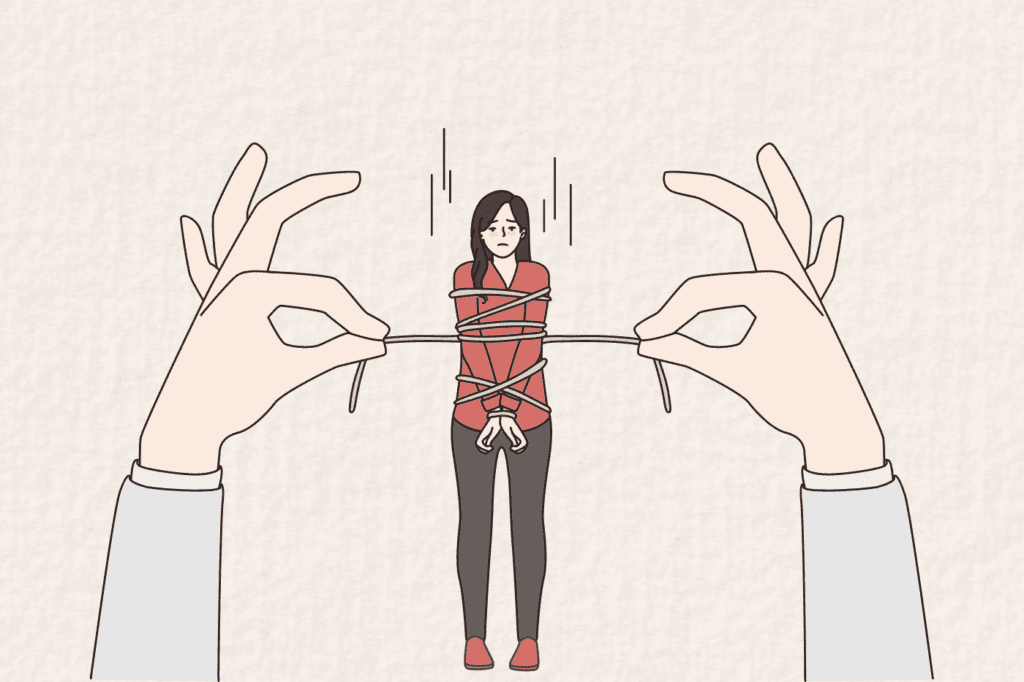
Are you constantly seeking to control every aspect of your life and the lives of those around you? That’s the controller shadow self-asserting its dominance. This type fears chaos and uncertainty, so it seeks to micromanage and manipulate situations to maintain a sense of control.
Born from experiences of chaos, unpredictability, or loss of control, the controller seeks to regain a sense of safety and security by exerting control over their environment and others.
8. The Martyr
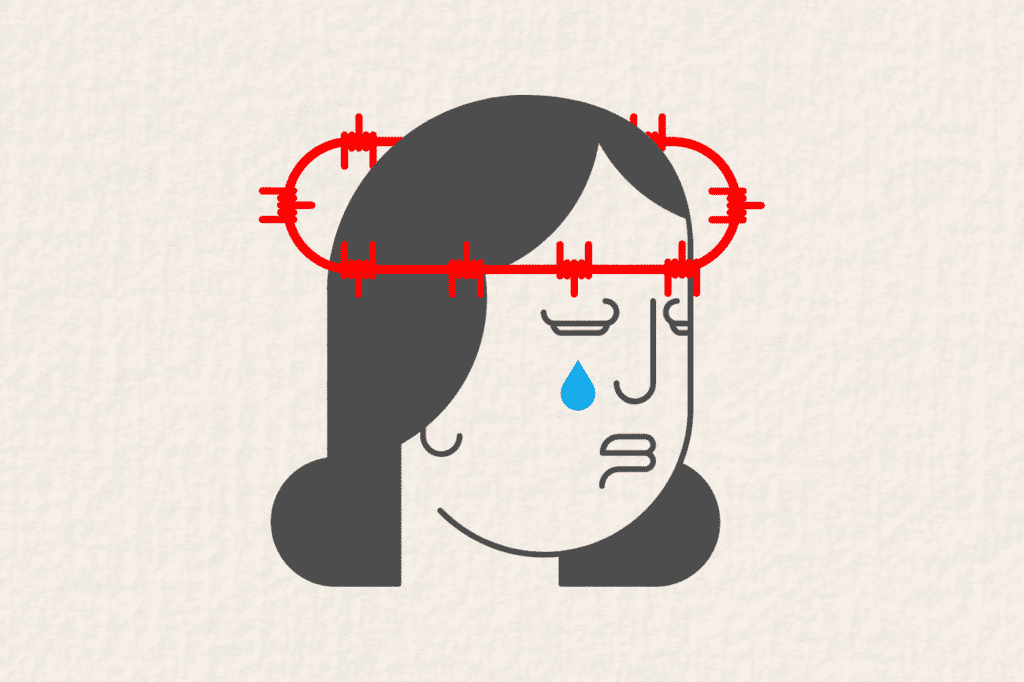
Do you sacrifice your own needs and desires for the sake of others, only to resent them later? That’s the martyr shadow self at play. This type thrives on self-sacrifice and martyrdom, seeking validation and recognition for its suffering.
Stemming from a history of self-sacrifice or martyrdom modeled by caregivers or cultural influences, the martyr complex seeks validation and worth through suffering and selflessness.
Which Shadow Self Type am I?

Now, you might be wondering—how do I figure out which shadow self type I am? Well, here’s the thing: we all have bits and pieces of each type within us. Your shadow self isn’t just one thing—it’s a complex tapestry of different traits and tendencies.
The key is to shine a light on those shadowy corners of your psyche and get to know yourself on a deeper level. Pay attention to your thoughts, feelings, and behaviors, and see if you can identify any patterns or recurring themes.
How to Embrace Your Dark Side?

Embracing your dark side—sounds intriguing, doesn’t it? But don’t worry, it’s not as ominous as it sounds. Here are some tips to help you navigate:
1. Acknowledge Your Shadow
The first step to embracing your dark side is acknowledging its existence. Recognize that everyone has aspects of themselves that they might not feel comfortable with or proud of. By accepting this reality, you open the door to self-awareness and growth.
2. Explore Your Shadow
Take some time to explore your shadow self through shadow work and shadow work prompts. This might involve journaling, therapy, or simply reflecting on your thoughts and behaviors. Pay attention to patterns or recurring themes that arise, and try to understand the underlying emotions and beliefs driving them.
3. Confront Your Fears
Facing your fears is a crucial part of embracing your dark side. Instead of avoiding or repressing uncomfortable emotions, lean into them with courage and curiosity. Ask yourself what you’re afraid of and why, and challenge any negative beliefs or assumptions you may hold about yourself.
4. Practice Self-Compassion
Embracing your dark side requires compassion and kindness toward yourself. Remember that you’re only human, and it’s natural to have flaws and imperfections. Treat yourself with the same level of compassion and understanding that you would offer to a friend in need.
5. Integrate Your Shadow
Rather than trying to banish or suppress your dark side, strive to integrate it into your sense of self. Embrace the lessons and insights that your shadow self has to offer, and recognize that it is a valuable and integral part of who you are.
6. Embrace Balance
Finally, remember that embracing your dark side is not about becoming consumed by negativity or indulging in harmful behaviors. It’s about finding balance and harmony within yourself. Cultivate a sense of wholeness by embracing both your light and dark aspects, and strive to live authentically in alignment with your true self.
FAQs about The Shadow Self
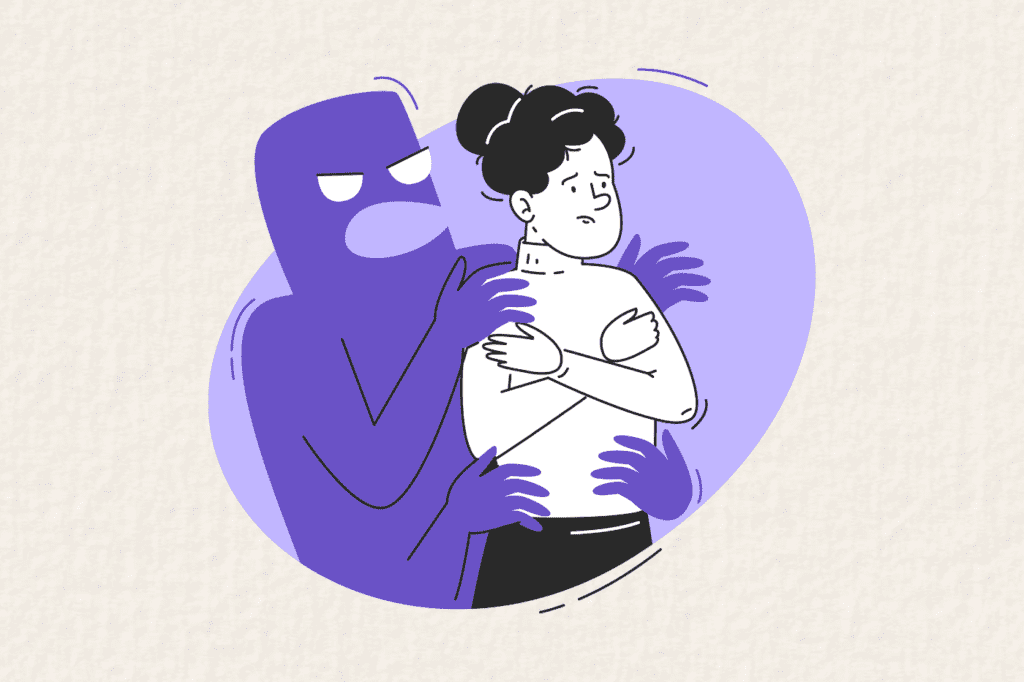
Can you meet your shadow self?
Absolutely! In fact, meeting your shadow self is an essential part of the journey toward self-awareness and personal growth.
It involves shining a light on the hidden aspects of your psyche and embracing them with compassion and understanding. While it may feel daunting at first, exploring your shadow self can lead to profound insights and a greater sense of wholeness.
What triggers the shadow self?
Your shadow self can be triggered by a variety of factors, including stressful situations, unresolved emotional issues, and conflicts in relationships.
Anything that challenges your sense of identity or brings up feelings of fear, shame, or insecurity can activate your shadow self. These triggers serve as opportunities for growth and self-discovery, inviting you to explore and integrate the hidden aspects of your psyche.
What is the opposite of the shadow self?
The opposite of the shadow self is often referred to as the “persona” or the “ego.” While the shadow self represents the hidden or unconscious aspects of our personality, the persona or ego represents our consciously embraced qualities, strengths, and virtues that we proudly showcase to the world.
Is your Shadow Self your Ego?
No, quite the opposite. Your ego is the conscious part of your personality—the one that interacts with the outside world.
Your shadow self, on the other hand, is the hidden depths of your psyche—the stuff lurking beneath the surface that you might not even be aware of.
Takeaway
Exploring the depths of our shadow selves can be both enlightening and daunting. As we’ve uncovered, our shadow self manifests in various types, each rooted in its unique set of traumas and fears.
From the procrastinator to the martyr, these shadows shape our thoughts, feelings, and behaviors in subtle yet profound ways.
I invite you to take a moment to reflect on your own shadows. Which types resonate with you? What traumas lie at the root of your shadow self? Embracing your dark side isn’t easy, but it’s a crucial step toward inner peace and authenticity.








